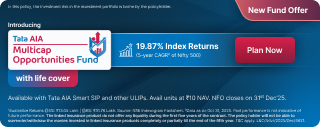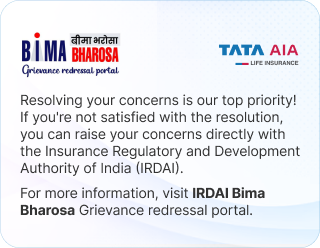Selecting an appropriate investment plan for middle-class families in India requires careful consideration of financial objectives. There are a number of schemes available, including ULIPs, bank fixed deposits, and mutual funds. They suit different financial requirements and risk exposures. This article explains which is the best investment plan in India for middle class in India.
Top investment options in India for a middle-class family
A number of factors must be considered when you decide the investment options for middle class in India. This covers your risk tolerance, number of dependents, present income, and financial objectives. These elements might assist you in determining which choices might be best for you.
Investment options for risk-averse individuals
The following are the best investment plans for middle class risk-averse investors:
Public provident fund (PPF)
PPF offers a government-backed long-term savings facility. It offers competitive interest rates along with tax* relief. This fund may be appropriate for conservative investors.
Features of PPF
- Interest: Moderate returns, around 7%, compounded annually
- Tax relief: Investment, interest, and maturity are all tax-free* (₹1.5 lakh deduction* permissible)
- Risk level: Very low, as the government provides fixed returns
- Investment amount: ₹500 minimum, ₹1.5 lakh maximum annually
- Lock-in period: 15 years (can be extended in 5-year increments)
- Loan facility: After 3 years (up to 25% of balance)
- Nomination: Allowed to ensure smooth transfer of funds to nominee.
Fixed deposits (FD)
Fixed deposits are offered by banks and financial institutions; you can deposit funds in bulk for a fixed term and earn interest.
Features of fixed deposits:
- Safety net: Deposits are insured up to ₹5 lakh
- Interest rates: 2.50% to 9.00% per annum (based on tenure and institution)
- Deposit duration: Minimum 7 days, maximum 10 years
- Withdrawal: You can withdraw early (a penalty may be charged)
- Taxation: Interest amount is taxable*, and there are some tax-free* options also available
RBI bonds
RBI offers debt securities backed by the Government of India. Such bonds have a sovereign guarantee. So, they are safe for conservative investors.
Features of RBI bonds:
- Tenure: 7 to 10 years
- Interest rate: FRSB offers a floating rate, currently at 8.05% (NSC rate + 0.35%).
- Tax treatment: Income is taxable* (exemptions for senior citizens)
Post office schemes
Post office schemes offer government-backed security with decent returns. These schemes are available across India.
Features of post office schemes
- Types: There are various types of post office schemes, such as Post Office Monthly Income Scheme, Senior Citizens Savings Scheme, National Savings Certificate.
- Safety: The government guarantee ensures the capital
- Variety: Various schemes for different purposes and tenures
- Accessibility: Extensive network of post offices in the country
- Tax benefits: Various schemes have tax benefits* under Section 80C
- Interest rates: Similar to deposits in banks
Investment options for individuals with moderate risk tolerance
The following are some common investment options for individuals with moderate risk tolerance.
Debt mutual funds
Debt mutual funds usually invest in fixed-income securities such as government bonds, corporate bonds, and money market instruments. These securities aim to provide regular income, called interest payments.
Features of debt mutual funds
- Investment orientation: Government securities, bonds, money market instruments
- Returns: Returns are usually stable but less than equity
- Risk level: Less than equities and less volatility in the market
- Tax implications: Short-term gains are considered as income, whereas long-term gains are taxed at 20% along with indexation benefits
- Fund management: Expert managers select and oversee underlying assets
National pension scheme (NPS)
NPS is a voluntary retirement savings scheme. It was launched in 2004 and is regulated by the Pension Fund Regulatory and Development Authority (PFRDA). The scheme builds a retirement corpus through periodic saving.
Features of national pension scheme
- Scheme type: Government-backed retirement savings scheme
- Returns: Market-linked based on investment option (equity, fixed income, auto choice)
- Tax benefits: Up to ₹1.5 lakh deduction* and 40% corpus tax-free* on maturity
- Portability: Transfer account between states easily
- Flexibility: Choose contribution and investment based on risk tolerance
- Eligibility: Indian citizens aged 18-65 years, NRIs/PIOs subject to certain restrictions
- Account types: Tier I (principal retirement account), Tier II (optional with full withdrawal facility)
Investment options for individuals having risk tolerance
Individuals with high risk tolerance can consider the following investment options:
Equity investment
Equity means owning a part of a company through shares traded on stock exchanges. When you buy equity shares, you become a partial owner and can benefit from company growth.
Features of equity investments:
- Ownership stake: You hold a portion of the company based on shares purchased
- Residual claim: You receive returns only after all company debts are settled
- Voting rights: Shareholders can participate in major company decisions through voting
- Dividend income: Companies may distribute profits to shareholders, though it's not mandatory
- Capital appreciation: Share prices can increase over time, giving you potential gains
Equity mutual funds
Equity mutual funds pool funds from multiple investors to buy company shares. They invest more than 65% of their corpus in stocks across various companies.
Features of equity mutual funds:
- Professional management: Experienced fund managers handle stock selection and portfolio decisions for you
- Market participation: Gives you exposure to stock market growth without needing direct trading knowledge
- SIP option: Systematic investment plans let you invest small amounts regularly with discipline
- Easy liquidity: Redeem your units quickly when you need funds (subject to exit loads)
- Low investment amount: Start investing with small amounts instead of buying individual stocks
Best investment plans for different life stages
The following are investment options for different life stages.
First job
The moment you begin earning money is the right moment to begin investing. This provides ample time for investments to grow. Market-linked options such as stocks, mutual funds, and ULIPs are available for investment. These carry a high risk, but they also have the potential to yield high returns. Longer-term investment, however, helps offset market swings.
You can also invest in a term insurance plan early in your career, as the premiums will be low when you buy at a young age. This will also help you save taxes by claiming a deduction* under section 80C* of the Income Tax Act, 1961.
Buying a house
You may invest in an endowment or savings plan if you plan to buy a house in a few years. This can provide a foundation in building finances so that when such purchases come, you are well prepared. It is a disciplined approach to saving, allowing you to secure your dream home.
If you are planning to take a home loan, you can get a term plan to secure your loved ones. In case of unfortunate circumstances, your loved ones receive a life cover to pay off the debts.
Marriage
As the responsibilities keep growing during this stage, one needs to identify and prioritise financial goals. This can help you align your investments with your goals. You need to understand how much you need for each particular goal and also how much time you have to invest.
You can strengthen your financial plan with a term plan that secures your loved ones. You can also add a critical illness rider to enhance the life cover. The amount received under this rider can be utilised to meet your medical expenses arising unexpectedly.
Child birth
Welcoming a child comes with many responsibilities, and thus, child education planning becomes vital. Your child may aspire to be a doctor, a pilot, a data scientist, an entrepreneur, or anything else. You must keep in mind their goals and consider investing in ULIPs or child insurance plans. These plans help you secure your child's future.
Pre-retirement
You now have a lot of responsibilities at this stage: taking care of your spouse, child, ageing parents, outstanding loans, and so on. You also need to start retirement planning. You can opt for pension plans or NPS, which can help you save regularly towards building your retirement fund. If you are already building a retirement fund, you can also invest in deferred annuity plans.
Retirement
Once you retire, your regular income stops. You wish to maintain your present lifestyle post-retirement, plan for higher medical expenses, and remain financially independent. You may have aspirations such as acquiring a hobby, being an entrepreneur, visiting places, and so on as well. Immediate annuity plans can be a solution to secure your life post-retirement. It provides you with a guaranteed regular income after retirement, which continues until your lifetime.
Conclusion
Financial security is an important concern for every middle-class family in India. Investing in the right financial instruments can help financially secure your family. Multiple investment options in India are available nowadays with various flexible features to encourage middle-class families to invest. Assessing your financial requirements, comparing different investment options, selecting a suitable plan, and staying invested can help meet financial goals and promote long-term capital growth.

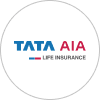
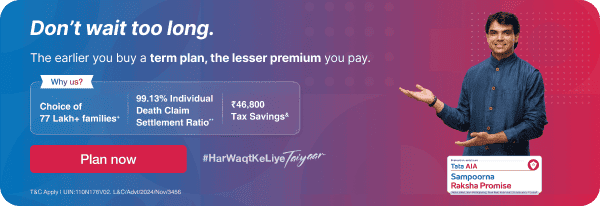


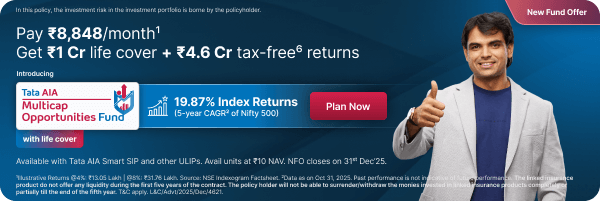

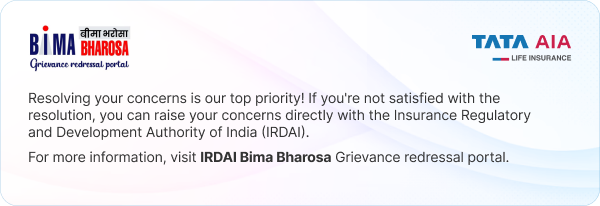



 FOR EXISTING POLICY
FOR EXISTING POLICY 
 FOR NEW POLICY
FOR NEW POLICY 




